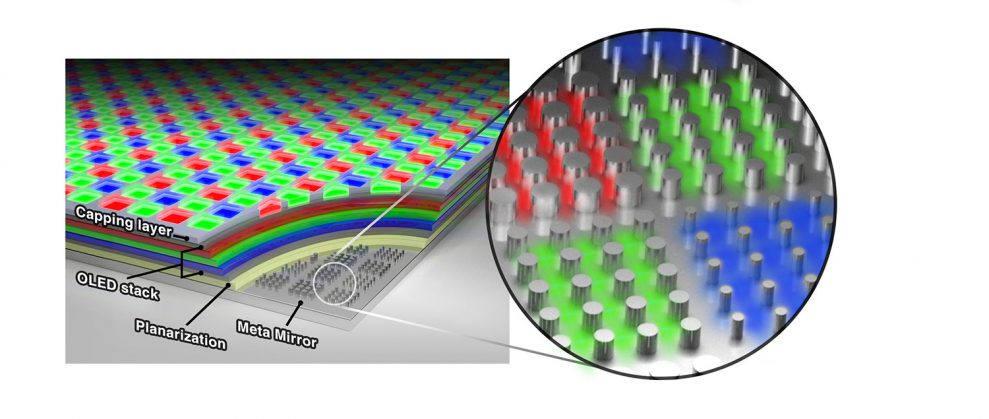Did you think 8K TV was sharp? Forget it. These have a pixel density of around 120-150 pixels per inch (PPI – Pixels Per Inch), while today’s sharpest small mobile screens have a pixel density of 400-500 pixels per inch.
But now Samsung has invented a new type of OLED screen that is supposed to achieve as much as 10,000 PPI, or up to 20,000 PPI in some contexts! The new technology has been developed in collaboration with scientists at the Stanford universe, and is based on an OLED panel with groundbreaking nano-technology.
Extreme pixel density and higher brightness
Today’s smallest OLED screens for mobile use are made by applying organic film on a metallic surface with lots of tiny holes. This technique places limits on how small the pixels can be and not least how large the screen can be. Larger OLED screens used in TV contexts use white OLED pixels with color filters, which also require a certain size here.
The new technology from Samsung and Stanford is called metaphotonic OLED and uses a white OLED film to illuminate a metal surface consisting of small columns. The columns are extremely small (only 80 nanometers high and 100 nanometers wide!), And four of them form a complete pixel that can emit red, green and blue light. The light is reflected inside the panel and out through a silver film, and is supposed to result in up to twice as high brightness as today’s OLED panels, in addition to cleaner colors. The researchers at Stanford compare the technique to a musical instrument, where the sound is amplified inside a sound box before it is released as pure tones through a hole. But here it is the light that comes out stronger and cleaner than we are used to. Pretty clever!

Can revolutionize VR glasses
So what can these microscopic and tightly packed pixels be used for? A suitable area of use may be VR glasses: These use tiny screens mounted close to the islands, and can be quickly detected by poor resolution. Visible pixel patterns or so-called screen door effects reduce the image experience, and although VR glasses have improved far over the years, there is a long way to go before they copy reality. A really razor-sharp screen can help blur the line between what is simulated and real images.
Not only that: Samsung claims that the technology is both scalable and relatively (!) Easy and cheap to produce. They have reportedly also developed larger prototypes of “nano-OLED” screens for TV use, for example. It will be exciting to see when the technology can be realized in an actual product, which is practical and not least affordable (!) In a consumer context.

